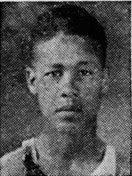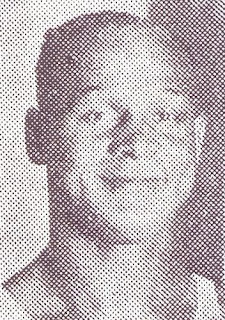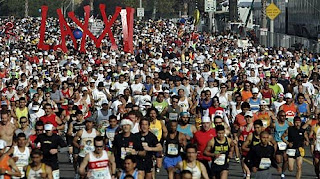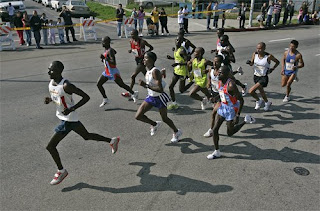Not even old enough to drive yet. To help his family this young man faced incredible odds and ran aross the United States. The youth of today can learn so much from the past, share this story with them.
MJ
Cotton, Toby Joseph, Jr. (1913–1978)
Toby Joseph Cotton, Jr., was born in Louisiana on March 2, 1913. By 1916, his family had migrated to Portland, Oregon before moving to Los Angeles, where his father worked as an auto mechanic. In 1925, Toby Cotton, Sr. was severely injured when a truck he was working on slipped off a jack. It crushed him, leaving him incapacitated and with his large famil
 y facing poverty.Toby Jr., the oldest of three boys, saw a chance to help his family when he read about the $25,000 first prize offered to the winner of the “Bunion Derby,” the nickname for the first footrace across America, scheduled to begin in Los Angeles on March 4, 1928. The prize money, a small fortune in the 1920s, lured this barely fifteen year old high school freshman to convince his parents to let him enter. On March 4, 1925, Toby joined 198 “bunioneers” at the start. He was listed as “T. Joseph” in press reports. He was one of five African Americans in the race. His father and his two younger brothers, Wesley, 13, and James, 10, followed Toby across the nation in the family’s well-worn car. Wesley drove while James brought his brother food and water as he ran. The men averaged forty miles a day and faced brutally tough conditions, including the Mojave Desert and the high country of Arizona and New Mexico. In Texas, Oklahoma, and Missouri, the black runners endured a hail of racial slurs and death threats from southern whites enraged by the sight of African Americans competing against whites in the Jim Crow South. Toby persevered in spite of the hardships. When the derby ended in New York City, Toby’s dream of saving his family seemed in tatters: He finished in 35th place, the family had used the last of its meager savings, and their battered car had broken down.Things looked bleak for the Cottons until William “Bojangles” Robinson came to the rescue. Robinson, who was in New York City starring in the all black musical, “Black Birds,” at the Liberty Theatre, organized a benefit performance for the Cottons and used the proceeds to buy the family a new car and send money back to Toby’s mother. Harlem philanthropist Casper Holstein presented Toby with a diamond-studded, gold medal for his historic run.Toby Joseph Cotton, Jr. died on July 20, 1978. At fifteen he was the youngest person to ever run across the United States.
y facing poverty.Toby Jr., the oldest of three boys, saw a chance to help his family when he read about the $25,000 first prize offered to the winner of the “Bunion Derby,” the nickname for the first footrace across America, scheduled to begin in Los Angeles on March 4, 1928. The prize money, a small fortune in the 1920s, lured this barely fifteen year old high school freshman to convince his parents to let him enter. On March 4, 1925, Toby joined 198 “bunioneers” at the start. He was listed as “T. Joseph” in press reports. He was one of five African Americans in the race. His father and his two younger brothers, Wesley, 13, and James, 10, followed Toby across the nation in the family’s well-worn car. Wesley drove while James brought his brother food and water as he ran. The men averaged forty miles a day and faced brutally tough conditions, including the Mojave Desert and the high country of Arizona and New Mexico. In Texas, Oklahoma, and Missouri, the black runners endured a hail of racial slurs and death threats from southern whites enraged by the sight of African Americans competing against whites in the Jim Crow South. Toby persevered in spite of the hardships. When the derby ended in New York City, Toby’s dream of saving his family seemed in tatters: He finished in 35th place, the family had used the last of its meager savings, and their battered car had broken down.Things looked bleak for the Cottons until William “Bojangles” Robinson came to the rescue. Robinson, who was in New York City starring in the all black musical, “Black Birds,” at the Liberty Theatre, organized a benefit performance for the Cottons and used the proceeds to buy the family a new car and send money back to Toby’s mother. Harlem philanthropist Casper Holstein presented Toby with a diamond-studded, gold medal for his historic run.Toby Joseph Cotton, Jr. died on July 20, 1978. At fifteen he was the youngest person to ever run across the United States. Sources:Charles B. Kastner, Bunion Derby: The First Footrace Across America (Albuquerque: University of New Mexico Press, 2007); “Benefit to Help Young Bunion Derby Runner Go Back Home, June 19,” New York Age, 16 June 1928; “Tobey Josephs Gets Diamond Medal and Auto From N. Y. Friends,” New York Age, 30 June 1928.



